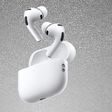![]() Every year for the past seven years, hackers have gathered at the annual PWN2OWN event to hack high-profile software and mobile devices using previously unknown vulnerabilities. Apple's Safari browser and iOS platform are often included in the annual contest, which also targets Internet Explorer, Chrome, Firefox, and Adobe's Flash and Reader applications. This year, Safari was taken down on day two by a team of vulnerability researchers and exploit developers from China, reports ThreatPost.
Every year for the past seven years, hackers have gathered at the annual PWN2OWN event to hack high-profile software and mobile devices using previously unknown vulnerabilities. Apple's Safari browser and iOS platform are often included in the annual contest, which also targets Internet Explorer, Chrome, Firefox, and Adobe's Flash and Reader applications. This year, Safari was taken down on day two by a team of vulnerability researchers and exploit developers from China, reports ThreatPost.
China's Keen team exploited two vulnerabilities that allowed the team to execute arbitrary code using a Safari WebKit flaw and circumvent Apple's sandbox via an OS X system-level vulnerability. Speaking about the vulnerabilities they found, the Keen team stated that Apple's OS X is difficult to exploit and the operating system overall is very secure.
"For Apple, the OS is regarded as very safe and has a very good security architecture," Keen team member Liang Chen said. "Even if you have a vulnerability, it’s very difficult to exploit. Today we demonstrated that with some advanced technology, the system is still able to be pwned. But in general, the security in OS X is higher than other operating systems."
Apple representatives attended the contest and were made aware of the security exploits used in the contest. This isn't the first time Safari has been exploited during the contest. In 2011, a team of French security researchers compromised a MacBook by remotely running code within five seconds of contacting the machine.























Top Rated Comments
I'm sure there is professional praise. Plus it's essentially free debug testing for the companies participating.
I would guess that if the second vulnerability circumvents sandboxing, that it should be the first fix. Webkit vulnerabilities are almost inevitable; that's why sandboxing exists. If sandboxing doesn't catch the threat or is bypassed, that's a greater weakness.
Having said all that, if this is the most secure, the others have some really big problems.
Indeed. And with the average GUI linux install being anywhere between 3~10 GB on disk, with the kernel only making up ~100MB of that, there is a lot of software stack to go around.
Karl P